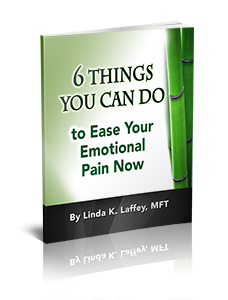Interacting with your ex post-divorce can often include tension, anxiety, and even anger.
Each time you have to talk or see each other might be so incredibly taxing on your emotions that it drains you. And this kind of emotional exhaustion is simply no way to exist.
Yet, to ease post-divorce interactions might seem like an impossible feat. After all, there is a reason you’re no longer married to this person.
This is where Eye Movement Desensitization and Reprocessing (EMDR) can help you to write a new and more pleasant chapter in your life—even when it comes to your ex. Here’s how.
1. Relieves Anxiety Symptoms
Few people who experience divorce get to the single side of life anxiety-free. Undergoing something as significant as the breakup of a marriage has an intense impact on people.
Fear about the future is the main driver for post-divorce anxiety. Being newly single can easily overwhelm even the most confident person.
But EMDR can help to relieve anxiety symptoms such as worry and feeling on edge about the future. It does this by allowing you to feel your way through your fears without risk of those fears actually happening. Unsurprisingly, this can be a very powerful experience, making your post-divorce interactions much less intense.
2. Helps to Reassign Negative Emotions
Possibly the most engaging aspect of EMDR is that it helps to assign new and positive emotions to otherwise negative memories. For this reason, EMDR is a popular therapeutic treatment for those who’ve experienced any type of trauma.
Divorce is undoubtedly a sort of trauma, no matter what caused the relationship to end.
With that kind of big emotion attached to your memories, of course, post-divorce interactions have the potential to be uncomfortable—sometimes heartbreaking. Yet, EMDR can help to replace negative emotions with positive emotions as they relate to your ex.
3. Supports Better Management of Emotional Triggers
For many, the mere smell of an ex’s perfume or cologne can catapult waves of emotions. Unsurprisingly, these types of emotional triggers often play a big part in post-divorce interaction.
It’s funny how something as trite as sight or smell can cause you such grief. But, it really can.
Along with re-assigning new emotions to negative memories, EMDR supports you as you learn to manage triggers. The two really go hand in hand, helping you to manage intense emotions so that you feel more in control.
4. Encourages You to Reinvent Yourself
The time frame after a divorce has been notoriously dubbed the time to “reinvent yourself.” Many times, this is touted as a chance to go wild and have fun. And really, you can do whatever feels right to you.
But, becoming single again and facing life sans a partner requires another type of reinventing yourself. After a divorce, it’s important and nearly unavoidable to establish anew your emotional foundation.
EMDR encourages you to reinvent and redefine yourself by empowering you to get to the heart of the matter. Bypassing emotional blockages, this type of therapy helps to streamline your healing and recovery period.
5. Establishes a New Norm
Dealing with your ex after a divorce can feel awkward. You might just want to get it over with. Yet, when you have any type of legal connection—children, shared business, co-finances, etc.—these interactions are inevitable.
To handle them with more ease, it’s critical to establish a new norm for yourself.
EMDR can help you redefine the emotional space that you and your ex fill. Simply replacing negative emotions with positive ones is a great start. But it doesn’t end there.
Take the first step…
If you’re ready to take a step toward easing post-divorce interaction, I would like to help. Please contact me by phone or email so we can discuss how we might work together to achieve your therapeutic goals as quickly and effectively as possible.
I look forward to hearing from you.
Linda K. Laffey, MFT


